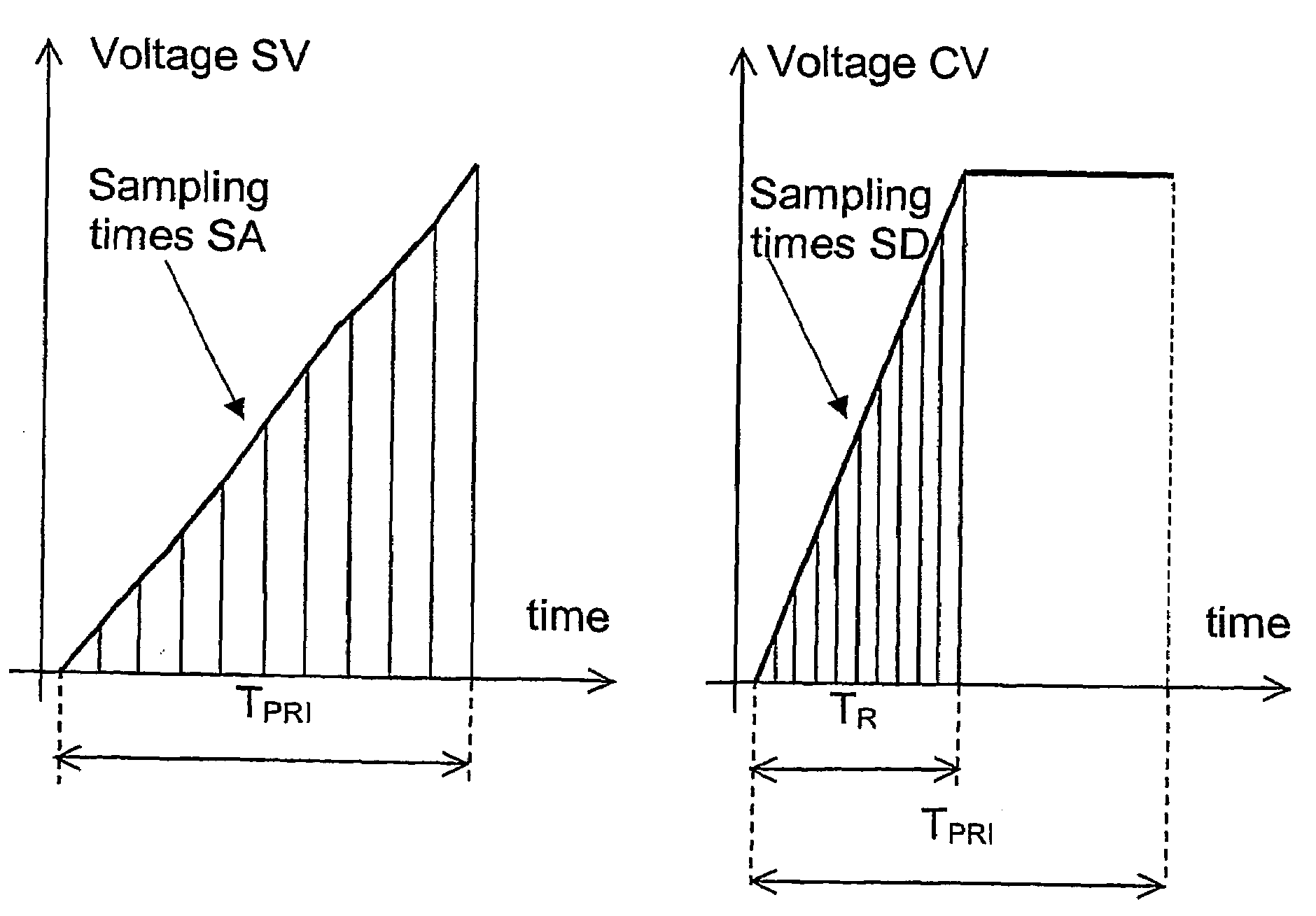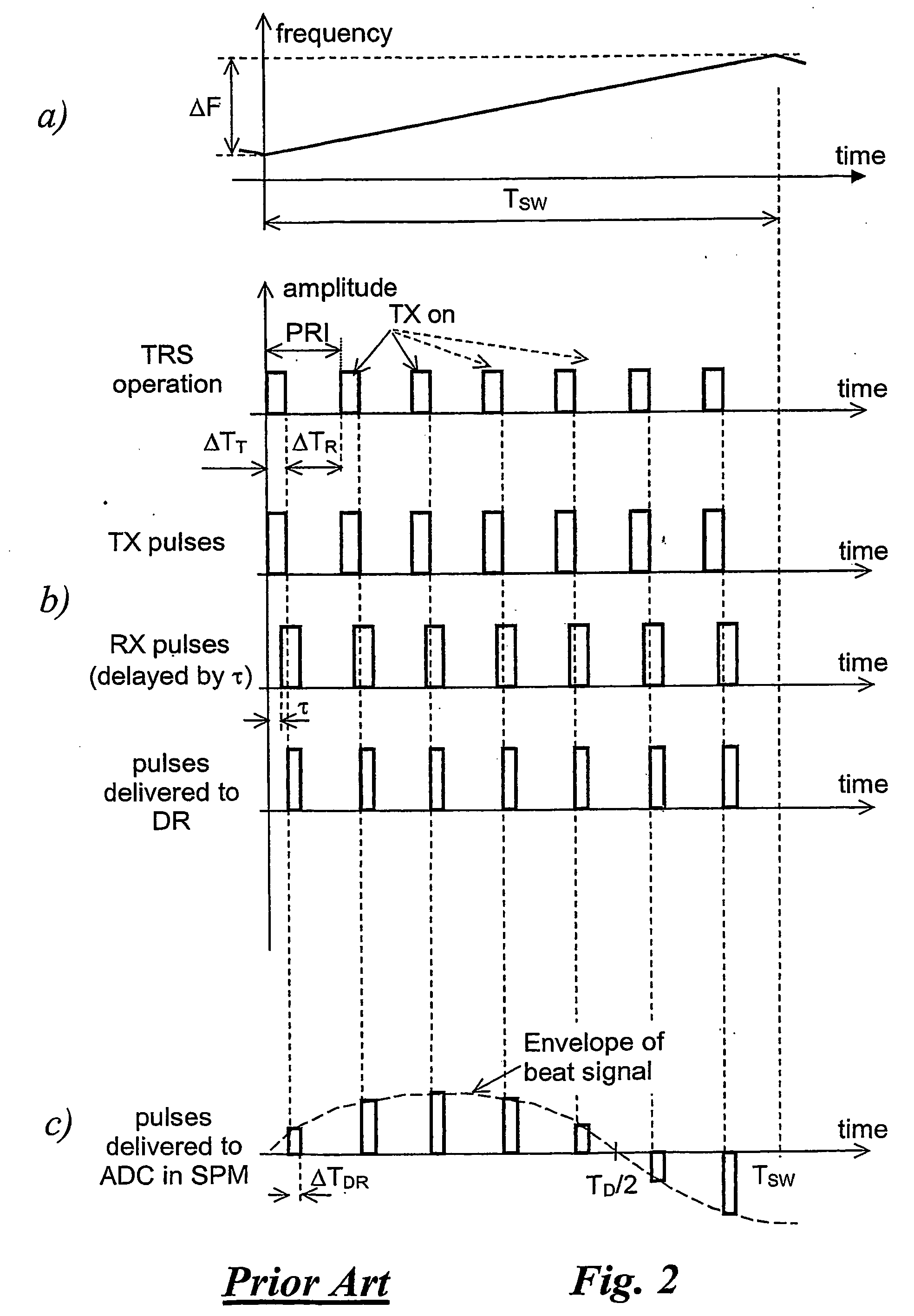Object Ranging
- Summary
- Abstract
- Description
- Claims
- Application Information
AI Technical Summary
Benefits of technology
Problems solved by technology
Method used
Image
Examples
example 1
[0037]Assume that an automotive FMICW radar operating in the microwave range has the following parameters:[0038]duration TSW of a linear frequency sweep, TSW=4 ms;[0039]frequency excursion ΔF during the sweep, ΔF=80 MH;[0040]pulse repetition interval TPRI=2 μs.
[0041]FIG. 2a depicts schematically the relationship between time and frequency, the frequency / time characteristic, for the notional automotive radar under analysis.
[0042]Because, in this case, the pulse repetition interval TPRI is equal to 2 μs, the unambiguous range of distance measurement will extend to 300 m. In a radar employing a linear frequency sweep, the distance D to an obstacle is determined from the difference FD between two frequencies: the frequency of a transmitted waveform and that of a waveform reflected by the obstacle, where
FD=2DcSFT
where c is the speed of light; SFT is the slope of the frequency / time characteristic, given by
SFT=ΔFTSW=20[Hzns]
[0043]Therefore, in the considered case, an obstacle at a distance...
example 2
[0062]Consider again a notional automotive FMICW radar of Example 1, and assume that the duration of a linear sweep segment has been reduced from 2 μs to 400 ns. In such a case, the maximum operational distance decreases to 60 m, but the local slope of the frequency / time characteristic increases from the notional value of 20 Hz / ns to 100 Hz / ns. Consequently, for an obstacle at a distance of 3 m, the beat frequency FD will increase from 400 Hz to 2000 Hz. Therefore, the task of distance determination through spectral analysis within the time interval TSW=4 ms and frequency resolution of 1.3 / TSW=325 Hz (when a Hamming window is used) will now be much easier.
[0063]FIG. 8 is a simplified functional block diagram of a non-linear (but piecewise linear) frequency sweep generator NFSG for use in the arrangement of FIG. 11 to generate the waveform of FIGS. 7a and 7b.
[0064]The non-linear frequency sweep generator NFSG comprises a voltage-controlled oscillator VCO, a frequency-sweep linearize...
PUM
 Login to View More
Login to View More Abstract
Description
Claims
Application Information
 Login to View More
Login to View More - R&D
- Intellectual Property
- Life Sciences
- Materials
- Tech Scout
- Unparalleled Data Quality
- Higher Quality Content
- 60% Fewer Hallucinations
Browse by: Latest US Patents, China's latest patents, Technical Efficacy Thesaurus, Application Domain, Technology Topic, Popular Technical Reports.
© 2025 PatSnap. All rights reserved.Legal|Privacy policy|Modern Slavery Act Transparency Statement|Sitemap|About US| Contact US: help@patsnap.com



